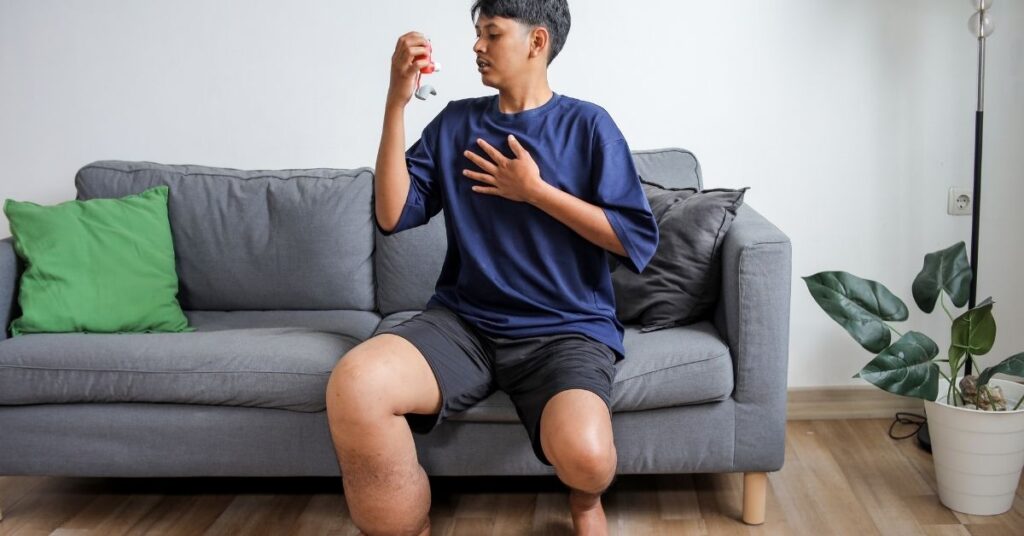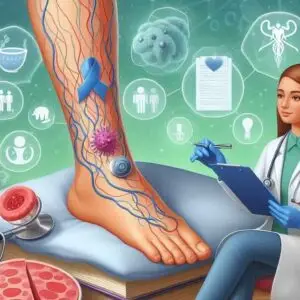Lymphedema is one of those health conditions that doesn’t get enough airtime, especially when it comes to men. It’s often associated with women, particularly after breast cancer treatment, but men deal with it too, and their experience comes with unique challenges. Swelling in the arms, legs, or other parts of the body can feel like a heavy, unwelcome guest, impacting everything from daily tasks to self-esteem. For men, societal expectations and physical differences add layers to managing this condition. So, what does lymphedema look like in men, and how can they effectively tackle it? This article dives deep into the specifics, offering practical insights and tailored strategies.
What Is Lymphedema, Anyway?
Lymphedema occurs when the lymphatic system, which functions like the body’s drainage network, becomes blocked or damaged. Fluid builds up, causing swelling that can range from mild to severe. For men, this might show up in the legs after prostate cancer surgery, in the arms after melanoma treatment, or even in the scrotum after specific procedures. It’s not just about puffiness; the skin can feel tight, heavy, or even painful. Over time, untreated lymphedema can lead to infections or mobility issues, which is why understanding it matters.
Men may notice symptoms such as a limb feeling unusually heavy, clothes or shoes fitting tighter, or skin that doesn’t bounce back when pressed. It’s not always dramatic at first, which is why guys often brush it off. But catching it early can make a big difference. The lymphatic system doesn’t get the spotlight like the heart or lungs, but it’s a workhorse, clearing out waste and keeping the immune system humming when it’s off-kilter, the body notices.
Why Men Face Unique Challenges
Men and women both deal with lymphedema, but the experience isn’t identical. For one, men are less likely to seek help early due to cultural pressures. Think about it: society often expects men to tough it out, so admitting to swelling or discomfort can feel like a hit to masculinity. This delay can exacerbate symptoms, making treatment more challenging. Additionally, men’s bodies tend to have more muscle mass and a different fat distribution, which can impact how lymphedema presents and progresses.
Another factor is the cause. While women often develop lymphedema after breast cancer, men are more likely to see it after treatments for prostate, testicular, or colorectal cancer. These cancers usually affect areas such as the pelvis or groin, where lymph nodes are densely packed, thereby increasing the risk of disruption. Men might also face lymphedema from injuries, infections, or chronic conditions like venous insufficiency, which are less common triggers in women. These differences mean treatments need to be tailored, not one-size-fits-all.
The Emotional Toll on Men
It’s worth pausing to discuss the mental aspect. Lymphedema can affect a person’s mental state. A swollen leg or arm isn’t just a physical issue; it can make someone feel self-conscious, especially in situations like the gym or on a date. Men might avoid shorts or tight shirts, worrying about stares or questions. Unlike women, who often have more open conversations about body image, men tend to internalize this stuff. That silence can lead to isolation or even depression if left unaddressed.
Talking to a therapist or joining a support group can be helpful, but it’s not always an easy decision. One guy I heard about described feeling like his swollen leg made him “less of a man” until he connected with others who got it. Sharing those stories, even anonymously online, can lighten the load. Acknowledging the emotional weight isn’t a weakness—it’s a step toward taking control.
Diagnosing Lymphedema in Men
Getting a proper diagnosis is the first hurdle. Lymphedema isn’t always immediately apparent, especially in its early stages. Doctors might mistake it for regular swelling from injury or heart issues. For men, the process often starts with a visit to a primary care doctor or oncologist, especially if there’s a history of cancer treatment. A detailed medical history is key—surgery, radiation, or even a nasty infection can be the culprit.
Tests like lymphoscintigraphy, which uses a tracer to map lymphatic flow, can confirm the diagnosis. Ultrasound or MRI may also be used to rule out other potential causes. The catch? Not every doctor is well-versed in lymphedema, so men may need to advocate for a referral to a specialist, such as a vascular surgeon or a lymphedema therapist. Being proactive here is critical. If something feels off, don’t wait for it to “go away on its own.”
Staging Lymphedema: What to Know
Lymphedema is classified into stages, from 0 to 3. Stage 0 is sneaky—no visible swelling, but the lymphatic system is already struggling. Stage 1 means mild swelling that might come and go. By Stage 2, the tissue gets firmer, and swelling is more constant. Stage 3 is the most severe, characterized by severe swelling, skin changes, and sometimes infections. Men often get diagnosed at Stage 2 or 3 because they delay seeking help. Knowing the stage helps doctors plan treatment, so it’s worth asking where you stand in terms of your condition.
Treatment Options Tailored for Men
Treating lymphedema isn’t about a quick fix; it’s about management. The goal is to reduce swelling, prevent complications, and improve quality of life. For men, treatments need to account for physical and lifestyle factors, such as higher muscle mass or a reluctance to wear specific garments. Here’s a breakdown of the main approaches.
Complete Decongestive Therapy (CDT)
CDT is the gold standard. It’s a combo of manual lymph drainage (MLD), compression, exercise, and skincare. MLD is a specialized massage technique that encourages lymphatic fluid to flow through working channels. A trained therapist does this, and men might need sessions focused on areas like the groin or legs, depending on the swelling. The hands-on nature can feel awkward at first, but it’s effective. One guy I know swore by it, saying his leg felt “alive again” after a few weeks.
Compression is the next piece. This means wearing bandages or garments to control fluid levels. For men, finding comfortable compression gear is key—think breathable fabrics and designs that don’t scream “medical device.” Some brands now offer sleek options that resemble athletic wear, which helps with compliance. Exercise, such as walking or using light weights, helps keep the lymph moving, but it must be low-impact to avoid strain. Skincare is non-negotiable; lymphedema increases the likelihood of infections like cellulitis, so moisturizing and checking for cuts is essential.
Compression Garments: A Guy’s Perspective
Let’s talk compression gear specifically. Men often resist wearing it, especially if it’s for the leg or groin. It can feel like putting on a costume, and nobody wants to deal with stares at the gym. But modern garments are a game-changer. Options like knee-high socks or shorts with built-in compression are discreet and practical. Getting fitted by a professional ensures the correct pressure—too tight, and it’s torture; too loose, and it’s useless. One tip: try wearing them during a low-key activity first, such as watching TV, to get accustomed to the feel.
Surgical Options: Are They Worth It?
For severe cases, surgery may be an option. Procedures such as lymph node transfer or lymphatic venous anastomosis aim to reroute lymphatic flow. These are more common in men with lymphedema from pelvic cancers, where swelling is stubborn. But surgery isn’t a cure-all. It’s expensive, carries risks, and requires a serious commitment to post-op care. Most guys start with CDT and only consider surgery if things don’t improve. Talking to a surgeon who specializes in lymphedema is the way to go—no generalist can wing this one.
Pneumatic Compression Devices
These are like high-tech boots or sleeves that inflate and deflate to move lymph fluid. They’re pricey but can be a good add-on for men who struggle with manual therapy or need extra help at home. The catch? They’re not a replacement for CDT, and some guys find them bulky. If you’re considering one, check if your insurance covers it—many plans do, provided you have a doctor’s note.
Lifestyle Adjustments for Men
Treatment isn’t just about therapy; lifestyle plays a huge role. Men with lymphedema need to reassess their their daily habits to manage symptoms effectively. Weight management is a big one. Excess weight puts more pressure on the lymphatic system, particularly in the legs. A balanced diet with reduced salt intake helps, as sodium can exacerbate swelling. One person I read about eliminated processed foods and noticed a noticeable drop in leg swelling within a month.
Exercise is another must, but it’s got to be smart. High-intensity stuff like CrossFit can backfire, causing more swelling. Instead, think swimming, yoga, or cycling—activities that boost circulation without overloading the body. Staying hydrated seems obvious, but it’s easy to forget. Water helps the lymphatic system function properly, so aim for at least eight glasses of water a day.
Navigating Work and Social Life
Lymphedema can complicate work, particularly for men in physically demanding jobs. Standing for extended periods as a teacher or construction worker can exacerbate leg swelling. If possible, take breaks to elevate the limb or wear compression gear consistently. At social events, guys might feel awkward about visible swelling. Planning—such as choosing looser clothing or scouting out a spot to rest—can help ease the stress. It’s about finding a balance, not hiding away.
Partnering with Your Healthcare Team
A strong relationship with your doctor or therapist is non-negotiable. Men often skip follow-ups, but lymphedema needs ongoing monitoring. Regular check-ins catch issues like infections early. If your current doctor isn’t a good fit, don’t be afraid to shop around for one who specializes in lymphedema. A good therapist can also teach you self-massage techniques, which is empowering for guys who want to take charge.
The Role of Mental Health Support
Let’s come back to the mental side. Lymphedema can erode confidence, especially for men who identify themselves with physical strength. Talking to a counselor or joining a support group can make a difference. Online forums are a low-pressure way to connect with others who are facing similar challenges. Even small steps, such as journaling about how the condition affects you, can help you process the frustration.
What About Alternative Therapies?
Some men explore acupuncture or herbal supplements, hoping to boost their health. The evidence here is shaky—acupuncture might help with pain but won’t fix the swelling. Supplements like horse chestnut are touted online, but they can mess with medications or cause side effects. Always run these by your doctor. Sticking to proven treatments like CDT is usually the safer bet, but it’s okay to be curious and ask questions.
Looking Ahead: Living Well with Lymphedema
Lymphedema isn’t something you “beat,” but it’s something you can live with. Men who thrive with this condition are the ones who take it seriously without letting it define them. It’s about small, consistent actions—wearing compression, staying active, and checking in with your body. Over time, these habits become second nature. The goal isn’t perfection; it’s progress.
The future of lymphedema treatment also looks promising. Research is exploring new therapies, including gene-based approaches and improved surgical techniques. For now, though, the focus is on management and empowerment. Men with lymphedema aren’t alone, even if it feels that way sometimes. Connecting with others, whether through a therapist or a forum, reminds you that this is just one part of your story.
Conclusion
Lymphedema in men is a complex condition, but it’s not a life sentence. With the right treatments, lifestyle adjustments, and mindset, men can manage symptoms and regain their confidence. From compression gear to therapy to mental health support, the necessary tools are available. The key is taking that first step, whether it’s seeing a specialist or slipping on a compression sleeve. It’s not about toughness; it’s about living well, swelling and all. Got questions? Here are some answers to get you started.
FAQs
Q1: Can lymphedema in men go away on its own?
Lymphedema is typically a chronic condition, meaning it persists without treatment. Early-stage swelling might improve with therapy, but ongoing management is key to prevent worsening.
Q2: Is exercise safe for men with lymphedema?
Yes, but it should be low-impact—activities like swimming or walking help lymphatic flow, while heavy lifting can exacerbate swelling. Consult a therapist for a personalized plan.
Q3: How can I determine if my swelling is due to lymphedema or another condition?
A doctor can diagnose it through tests like lymphoscintigraphy. If swelling persists, feels heavy, or doesn’t improve with rest, see a specialist to rule out other causes.
Q4: Are there any foods men with lymphedema should avoid?
Salty foods can increase swelling, so limit your intake of processed snacks. A balanced diet, combined with sufficient water intake, supports the lymphatic system.
Q5: Can surgery cure lymphedema in men?
Surgery can reduce swelling in some cases, but it’s not a guaranteed cure. It’s typically a last resort after trying therapies like CDT, and results vary.





